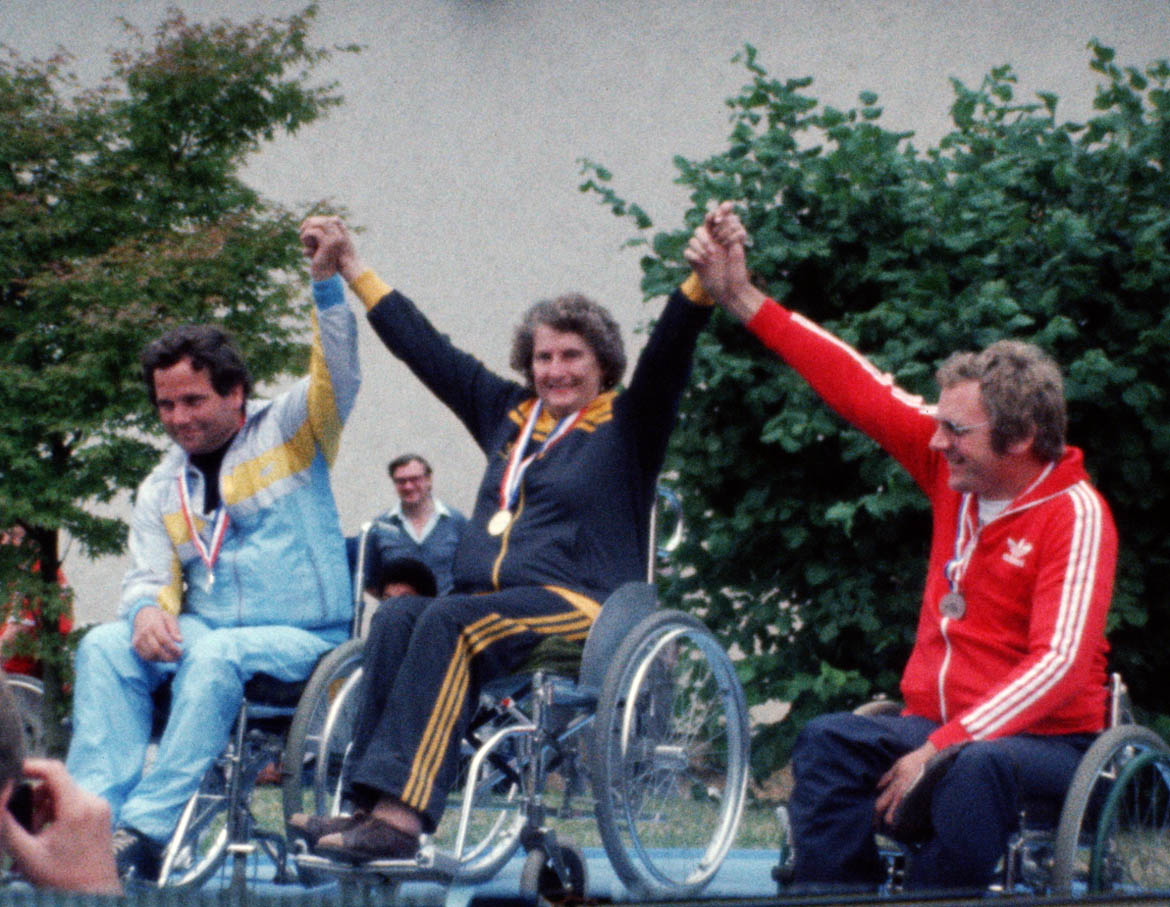By Greg Campbell
Libby Kosmala is rightly celebrated as Australia’s greatest-ever Para-Shooting athlete, but another proud South Australian joins her in the ranks as among the nation’s finest ever Para Rifle competitors.
The late Barbara Caspers attended three Paralympic Games in 1980, 1984 and 1988 and won a total of five gold medals, one silver and one bronze.
Caspers, a quadriplegic, hailed from Strathalbyn, an hour south of Adelaide where she grew up in a farming community and had experience in Shooting prior to her accident.
After her accident, Caspers reached out to Kosmala and the pair would compete at the State Shooting Park in Virginia, north of Adelaide.
Caspers’ ability to hold the weight of a rifle was limited and she used a strap to assist her supporting arm.
“We had to try and find someone to coach us. Para shooting was very low key then and very different to what it is now,” said Kosmala.
“Eventually, Jim Close, a very good shooter, took us under his wing,” added Kosmala.
Kosmala had attended the 1972 and 1976 Paralympic Games and Caspers joined her fellow South Australian in the Australian team for the 1980 Games.
Held in Arnhem, Holland, the Games saw 1,973 Para athletes from 43 countries participate and they competed in 13 sports.

A crowd of 12,000 people attended the Opening Ceremony where International Paralympic Committee Honorary Board member, Princess Margriet, officially opened the Games.
Interestingly, the Soviet Union was invited to attend the Games but when a Western journalist asked whether a team would participate, a Soviet representative replied; “There are no invalids in the USSR!”
Regardless of the Soviet non-attendance, Caspers enjoyed great success capturing gold in the Mixed Air Rifle Kneeling 1A-1C, silver in the Mixed Air Rifle 3 Positions 1A-1C and a bronze in the Mixed Air Rifle Standing 1A-1C.
Denmark’s Jan Kristensen was the stand-out performer winning gold in both the Mixed Air Rifle 3 Positions 1A-1C and the Mixed Air Rifle Standing 1A-1C.
The 1984 Paralympic Games were held in two separate global cities, New York in the USA, and Stoke Mandeville in the United Kingdom – the birthplace for the Stoke Mandeville Games which was the precursor to the modern Paralympic Games.
Stoke Mandeville held events for wheelchair athletes with spinal cord injuries, and New York hosted wheelchair and ambulatory athletes with cerebral palsy, amputees, and les autres.
A year prior to the Games, Caspers and Kosmala travelled to Stoke Mandeville for a Shooting World Championship and enjoyed great success. It proved to be a clear form guide for the Games 12 months later.
At the Games, Caspers and Kosmala were unstoppable winning eight of Australia’s total of 49 gold medals to ensure Australia finished the Games as the number one ranked Shooting nation.
Caspers performed a clean sweep winning gold in the Women’s Air Rifle Prone 1A-1C, Women’s Air Rifle Standing 1A-1C, Women’s Air Rifle Kneeling 1A-1C and in the Mixed Air Rifle 3 Positions 1A-1C.

Caspers’ final Paralympic Games were the 1988 Games in Seoul.
These Games were first held under the aegis of the International Co-ordinating Committee (ICC). The ICC was accepted into the Olympic Family which led to greater co-operation by National Olympic Committees.
The Seoul Olympic Organising Committee (SLOOC) regarded the Paralympic Games as an extension of the Olympic Games and formulated a support plan which allowed sharing of Seoul Olympic manpower, facilities, equipment, and sharing of key personnel.
A then record 3,041 athletes (2,370 men and 671 women) from 60 countries participated. They competed in 733 medal events across 18 sports.
The Games also saw the re-classification of Shooting events.
Under the new guidelines, Caspers competed against Kosmala in the SH1 classification. Because of the severe nature of her quadriplegia, Caspers was unable to match up against a dominant Kosmala.
Kosmala was almost unstoppable winning a hat-trick of gold medals in the Women’s Air Rifle 3 Positions, Women’s Air Rifle Prone, Women’s Air Rifle Kneeling (all SH1) and silver in the Mixed Air Rifle Standing (SH1).
Caspers’ best result was eighth placing in the women’s Air Rifle kneeling, however she is regarded as a pioneer of Para Shooting in Australia and in the history of the Australian Paralympic movement.